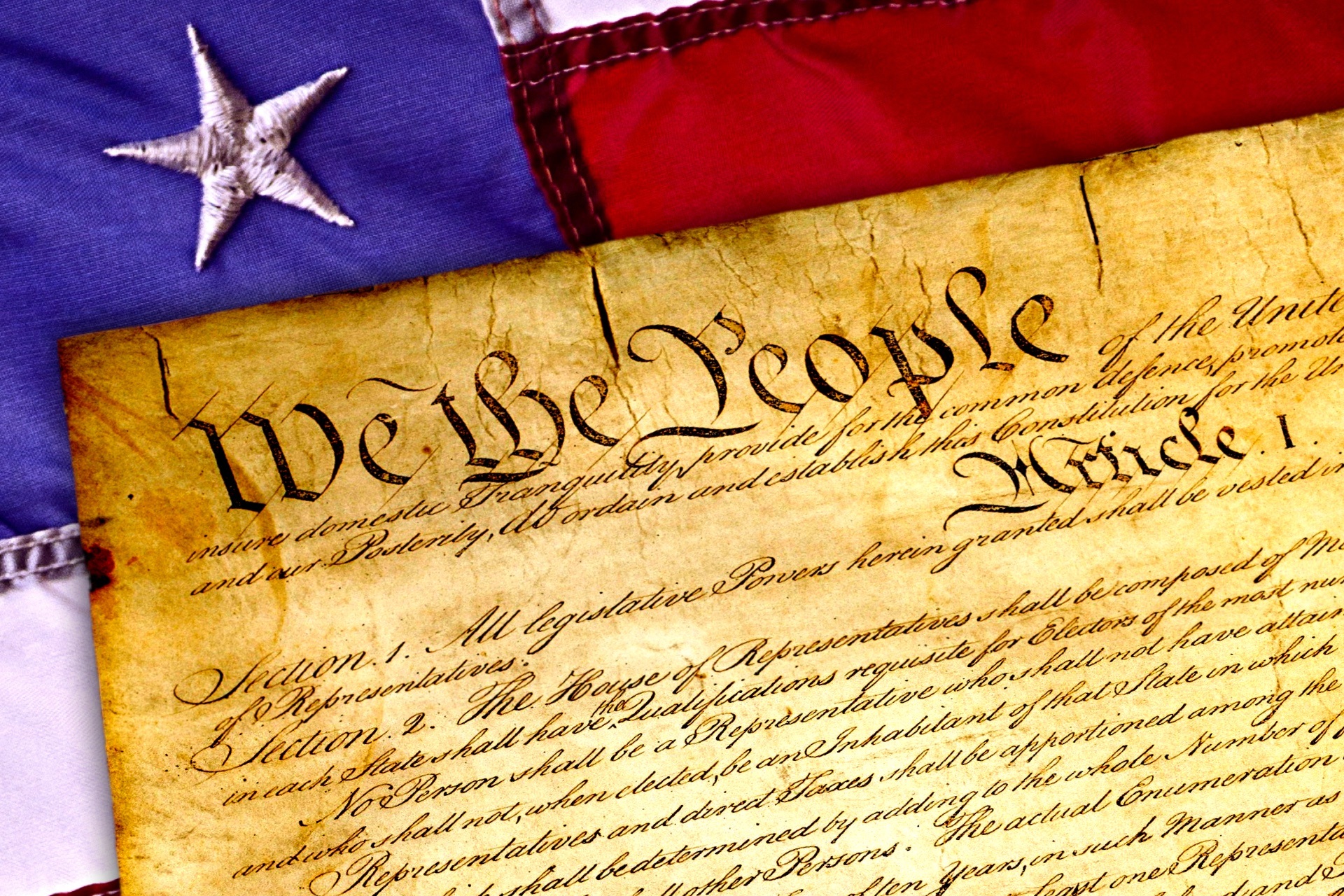Context
In Dobbs vs Jackson Women’s Health Organization, the State’s primary argument is that the court should reconsider and overrule Roe and Casey and once again allow each State to regulate abortion as its citizens wish [Page 4 of the leaked draft judgement].
The ruling mentions that “for the first 185 years after the adoption of the Constitution, each State was permitted to address this issue in accordance with the views of its citizens” [Page 1 of the leaked draft judgement].
The draft judgement notes that “It is time to heed the constitution and return the issue of abortion to the people’s elected representatives. The permissibility of abortion, and the limitations, upon it, are to be resolved like most important questions in our democracy: by citizens trying to persuade one another and then voting…. That is what the constitution and the rule of law demand” [Page 6 of the leaked draft judgement].
The Issue at Stake
The judgement notes that “Some [state legislatures] have recently enacted laws allowing abortion, with few restrictions, at all stages of pregnancy” [Page 4 of the leaked draft judgement].
The question that this raises, is whether such laws allowing abortion are consistent with the Constitution or whether laws allowing abortion are in violation of constitutionally protected rights and principles.
Reasons To Look Beyond The Absence of The Word “Abortion” In The Constitution
Abortion is a matter of grave importance. It is a matter of life and death for hundreds of thousands of preborn human beings every year in the United States.
Therefore, the court needs to decide not only if there is a right to abortion in the constitution. The court also needs to decide on the opposite question i.e., if abortion is in violation of the constitution. The court ought to determine whether they are constitutional protections one way or the other.
- The court has looked beyond the word “abortion” in deciding if there is a right to abortion in the constitution by correctly noting that “The Constitution makes no reference to abortion, and no such right is implicitly protected by any constitutional provision” and that abortion is “critically different from any other right that this Court has held to fall within the Fourteenth Amendment’s protection of liberty … because it destroys … an unborn human being” [Page 5 of the leaked draft judgement].
- However, the court has not looked beyond the word abortion in deciding the opposite question i.e., if abortion is in violation of the constitution.
Therefore, the court must also ask the question about whether abortion [either the physical act of abortion or the enactment of laws legalizing abortion] violates any of the protections or principles inherent or implicit in the constitution, even though the constitution may not mention abortion explicitly.
Laws Legalizing Abortion Would Violate Constitutional Protections
Abortion not only involves merely removing a baby from a woman’s womb [e.g., with reasonable care being exercised to not directly harm the preborn child] so that the woman is no longer impeded by the pregnancy, but also involves directly killing the preborn child, prior to [or while] removing the child from the womb.
The enactment of legislation legalizing abortion would entail the following significant constitutional violations by the concerned states:
- The state would be permitting its citizens to deprive [innocent] persons of life without the due process of law. Such states would thereby be codifying laws that violate the protections of the 5th amendment of the U.S Constitution.
- The state would be denying preborn human persons “the equal protection of the laws” – because they would not be protected from being deprived of life without the due process of law, that other people are protected from – and would therefore be violating the “equal protection” clause of the 14th amendment of the U.S Constitution.
The physical act of aborting [prematurely ending] the life of a living and growing innocent human being without due process, would entail the following constitutional violation:
- Violating the 5th amendment of the U.S Constitution.
Therefore no state should be able to establish laws that legalize abortion as it would be an explicit contradiction of the protections in the constitution.
The History of Abortion Laws Is Very Useful But Insufficient As The Sole Rule For Abortion Law Today
The history of abortion law in the United States serves at least two very important functions:
- Noting that abortion was never understood – prior to Roe – as a right guaranteed by the U.S Constitution.
- Noting that when it was evident that human life was present [as evidenced by quickening], abortion was always understood to be illegitimate or illegal [as is evident from the laws about post quickening abortion].
Therefore, historical abortion law serves as an invaluable resource to test the historical understanding of the constitution on the issue of abortion.
However, historical abortion law has the following limitations as well:
- It is insufficient as the sole rule for regulating abortion today. We need to be very careful not to inadvertently prioritize historical laws over the text of the constitution, because the constitutional itself takes precedence over the historical application of the constitution. Therefore, we ought rather, to merely use historical laws to test the historical understanding of the constitution.
- We need to be especially careful on using historical law on abortion as the sole yardstick [as the only authentic and legitimate interpretation of the Constitution on this matter]. Why? Because historical law on abortion was clouded by the uncertainty of when human life began and perhaps given this uncertainty, the decision was left up to the state legislatures. However, today we know with certainty when human life begins.
Considerations for Applying The Constitution To Abortion Today
Scientific ambiguities on the beginning of human life – which existed historically – are no longer ambiguous today.
Today, we know with certainty that human life begins at conception [scientifically] and even as early as the 7th week of pregnancy [5 weeks post conception], the human life that began at conception has taken on a distinctly human form and is now even unmistakably human in appearance.
In the presence of modern scientific certainty that human life begins at conception, it is not sufficient to apply the law on this specific issue exactly as it was applied in the past.
Rather, abortion must be regulated today by the principles and protections as enshrined in the text of the constitution.
The historical understanding of the constitution [as evidenced by historical abortion regulations] supports a modern-day prohibition of abortion.
What is certain from historical abortion laws is that when there was no ambiguity and it was clearly evident that human life was present [as evidenced by quickening], abortion was deemed to be inappropriate or illegal.
If we were to apply the same logic that governed historical abortion law [i.e., that abortion is inappropriate or illegal when it was evident – as evidenced by quickening – that human life was present] to the modern day [where it is evident that quickening does not indicate the beginning of human life, and that human life begins at conception], it must follow that abortions post conception must be illegal, as it ends the life of an evidently living human person.
The Role of The Legislature
It is not the upholding of the constitutional protection for preborn human life [which is firmly grounded in history as well as in the text of the constitution], but rather the setting aside of it [i.e., amending the constitution to include a right to abortion] that must be accomplished “by citizens trying to persuade one another and then voting”.
What About Dobbs vs Jackson Women’s Health?
If the court were to explicitly rule [in Dobbs vs Jackson Women’s Health] that states have the authority to enact laws governing abortion [including permitting abortion], this could present difficulties further down the line.
If states enacted laws allowing abortion, and these laws are legally challenged as a violation of the Constitution [either on the issues mentioned above or on others], and the court determines in those cases that state sanctioned abortion does in fact run afoul of constitutionally protected rights, it would be difficult for the court at that point to walk back the judgement in Dobbs that each state is permitted to address the issue in accordance with the views of its citizens.
At the same time, the Supreme Court may not feel it opportune to rule on the above issues now, as the above-mentioned issues have not been brought before the court in Dobbs vs Jackson’s Women’s Health.
Therefore, it seems to me to be in the interest of the consistent jurisprudence, for the court to repeal Roe and Casey and to uphold the Dobbs law, without stating that the states have the right to enact laws governing abortion. The court could uphold the Dobbs law purely on the basis that the constitution does not contain a right to an abortion.
Such a decision would de-facto re-instate the status quo prior to Roe [with each state deciding on abortion law within its confines], without the Supreme Court explicitly stating that such a scenario is constitutional.
Then, if and when a follow up case presents itself before the court on the constitutionality of state legalized abortion, the court could rule on whether state laws legalizing abortion are constitutional or not, without possibly having to walk back the precedent of Dobbs [that state legislatures can enact laws governing abortion].




whoah this blog is wonderful i love reading your articles. Keep up the good work! You know, many people are searching around for this info, you could help them greatly.